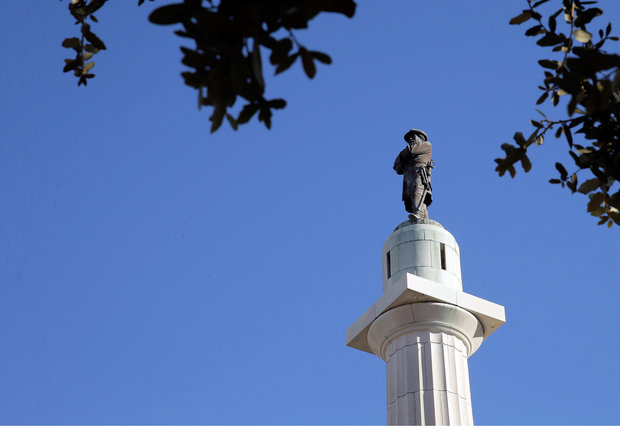New Orleans officials can begin the process of removing the statue of Confederate Gen. Robert E. Lee at Lee Circle and three other monuments at the center of a long-running, city-led effort, a federal appeals court ruled Monday (March 6).
In the ruling, the three-judge panel with the 5th Circuit U.S. Court of Appeals found that the groups trying to block the removal of the monuments, Monumental Task Committee and the Louisiana Landmarks Society, failed to present a case that contained a legal argument that showed the monuments should stay up. The court wrote that the groups relied on two legal claims, "both of which wholly lack legal viability or support."
Mayor Mitch Landrieu's office said that a request for proposals will be issued within the next day to obtain bids for a company to remove the monuments, which will be stored in a city-owned warehouse until it's determined what will happen to them.
In addition to Lee's statue, the monuments slated for removal are Confederate Gen. P.G.T. Beauregard at the City Park entrance near Esplanade Avenue and the statue of Confederate President Jefferson Davis in Mid-City.
Also slated for removal is the Battle of Liberty Place monument near the foot of Iberville Street, although it has been treated separately from the other three because it was previously moved from Canal Street for a federally funded transportation project. It honors a white separatist-led skirmish to overthrow the Reconstructionist leadership of New Orleans.
The ruling comes as litigation surrounding the monuments continues to play out in U.S. District Court. Although the case is still being litigated there, Judge Carl Barbier had ruled the city could take down the monuments because there is not a strong likelihood that the groups opposing the removal will prevail. The 5th Circuit decision upheld that ruling.
In a statement, Landrieu said that the court's ruling affirms "the city's ability to control its property."
"This win today will allow us to begin to turn a page on our divisive past and chart the course for a more inclusive future," Landrieu said. "Moving the location of these monuments -- from prominent public places in our city where they are revered to a place where they can be remembered -- changes only their geography, not our history."
Landrieu added that "these monuments will be preserved until an appropriate place to display them is determined."
In the ruling, the court wrote that "by failing to show a constitutionally or otherwise legally protected interest in the monuments," the groups opposing the monument removal "have also failed to show that any irreparable harm to the monuments -- even assuming such evidence -- would constitute harm."
The groups opposing removal also argued that there is uncertainty about the ownership of the land where the monuments stand, and that the court should block removal until it can be determined who really owns the land. The city has maintained it owns the land freely and clearly; some of the land was in private hands in the past but ownership eventually passed to the city.
The court agreed.
"We have exhaustively reviewed the record and can find no evidence in the record suggesting that any party other than the city has ownership," the court wrote.
There were also arguments that the city had not proven it could remove the monuments without damaging them. The court rejected that argument, writing, "we accept the city's assurances that it will hire only qualified and highly skilled crane operators and riggers to relocate the monuments .. (and) that the monuments are merely to be relocated, not destroyed."
In the end, the court said it would not comment on the "wisdom of this local legislature's policy determination," nor how states should "memorialize, preserve and acknowledge their distinct histories."
"Wise or unwise, the ultimate determination made here, by all accounts, followed a robust democratic process," the court wrote.
In a statement, the Monumental Task Committee said its members and the Louisiana Landmarks Commission are considering whether to ask the 5th Circuit for an en banc hearing, in which all 14 of its judges would be asked to reconsider the three-judge panel's decision.
"Despite this setback, the non-profit organizations that filed the original suit will continue to argue that all the City's historic monuments and cultural sites should be preserved and protected, and that a more appropriate response to calls for the monuments' removal is a program to include explanatory plaques and markers to present these individuals in the context of their time," the statement said.
City officials have acknowledged there are likely to be protests associated with the monuments' removal. City Attorney Rebecca Dietz wrote the court a letter in December asking for prior warning to a decision so that the city could deploy police resources in anticipation of the ruling.
